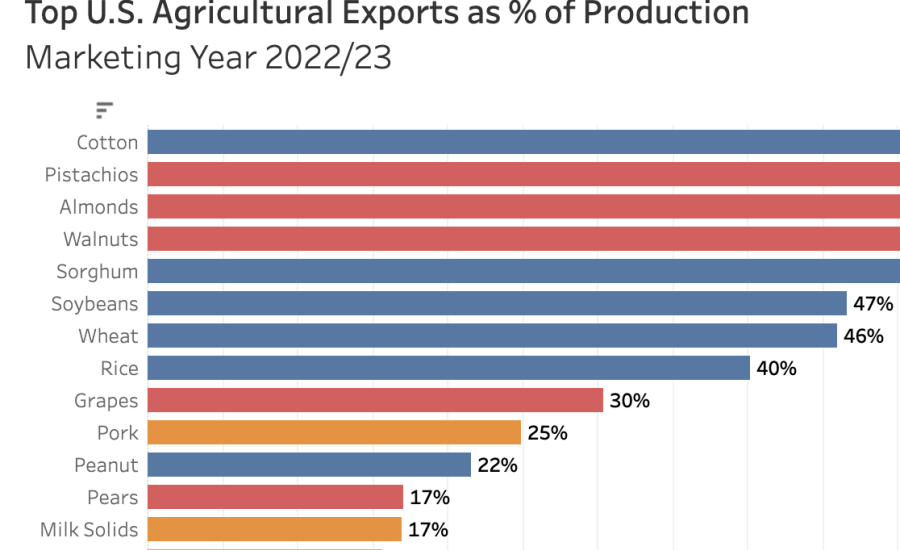Browse Data and Analysis
Filter
Search Data and Analysis
- 5 results found
- (-) Dairy, Livestock and Poultry
- (-) Tree Nuts
- (-) 2024
- Clear all
Since USDA first established a stand-alone mission area focusing on trade and international affairs in 2017, USDA’s Trade and Foreign Agricultural Affairs and the Foreign Agricultural Service have made significant trade policy advances to support U.S. agriculture. This series of commodity fact sheets highlights the many recent trade policy advances achieved by USDA.
In 2023, Morocco was the second-largest export market for U.S. agriculture on the African continent, importing over $610 million in U.S. agricultural products, accounting for over 16 percent of all U.S. exports to Africa. The United States has seen total exports quadruple and agricultural exports double since entering into a free-trade agreement (FTA) with Morocco in 2006.
U.S. agricultural exports are a critical source of farm income. The USDA Economic Research Service estimates that on average 23 percent of the output of nonmanufactured agricultural products were exported between 2013 and 2022.
Vietnam offers abundant opportunities for exporting consumer-oriented products, despite the challenges of recovering from the COVID-19 pandemic and dealing with high inflation. The Vietnamese economy is poised for significant expansion in the coming decades. With a burgeoning population and a growing middle class, Vietnamese consumers are becoming more discerning about the origin and composition of their food.
India is the world’s most populous country and boasts one of the fastest growing economies in the world. As Indian households continue to reach higher levels of consumer spending, imported agricultural products are becoming more accessible to a larger number of people.

